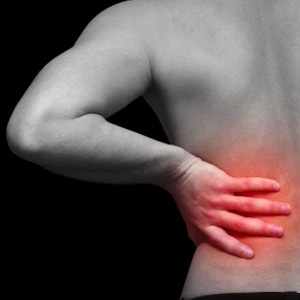
Going under the knife. In only 2% of cases where people have back pain, is surgery necessary. Physiotherapists, chiropractors and doctors can often sort out backaches. Surgery is sometimes necessary when back pain is relentless or the patient is experiencing nerve compression or incontinence.
The lowdown on back pain. Most people have lower back pain. This is because the lower back bears the weight of the upper body. It also twists and bends more than the upper back.
Bending over backwards. The spine consists of 33 bony segments, the vertebrae. The discs lie between these. They are tough and spongy and work as shock absorbers, and give the spine flexibility – the spine can in fact bend far enough to form two-thirds of a circle.
Slipping up? If your back pain started after a trivial movement, such as picking up a book from the floor, you could have a slipped disc or a joint problem in your spine.
Branching out. Nerves from the spinal cord branch out and leave the spine through spaces between the vertebrae at the levels of the discs.
Not tonight, dear. I have a backache. Backache is second only to headaches as the most common location of pain.
Sitting ducks. Many people who often have back pain, either lead inactive sedentary lives, or have inherited a genetic susceptibility to back pain.
They don't call them stones for nothing. Severe intermittent back pain that goes down to your groin, could indicate that you have kidney stones.
Not such good vibrations. Vibration often causes back problems, which is why truck drivers often have backache.
You've got lots of company. In any two-week period of time, between 25 – 33% of all adults get some form of back pain.
Tilt that angle. Cyclists often experience back pain, which can often be rectified by adjusting the angle of the bicycle seat.
Down on all fours. Back pain became a part of life when humans started walking upright, rather than on all fours. The vertebrae were never really designed to deal with walking upright.
Right down the middle. Pain in the middle of your back, which becomes worse after eating, could indicate a stomach ulcer.
The centre of it all. The spine, for all intents and purposes, is like a central scaffolding for the rest of the body. The skull, the ribs, the pelvis and the limbs are attached to it.
So why does this happen? In about 85% of acute back pain cases, the exact cause cannot be identified.
Neighbouring organs problematic? Back pain can also be the result of abscesses, blood clots or tumours in other organs near the spine.
Try this for strength. The spine is so strong that it can withstand the pressure of hundreds of kilograms.
All on its own. Eighty to 90% of back pain resolves itself within a month to six weeks.
Help or hindrance? Prolonged use of back braces and supports can actually weaken the muscles in your back, thereby contributing to the problem.
Red alert. When certain conditions, are present together with back pain, such as loss of bowel or bladder control, numbness, pins and needles, rapid weight loss, a history of cancer, or drug use, pain unrelated to movement, the patient should receive immediate medical attention.




 Publications
Publications
 Partners
Partners















